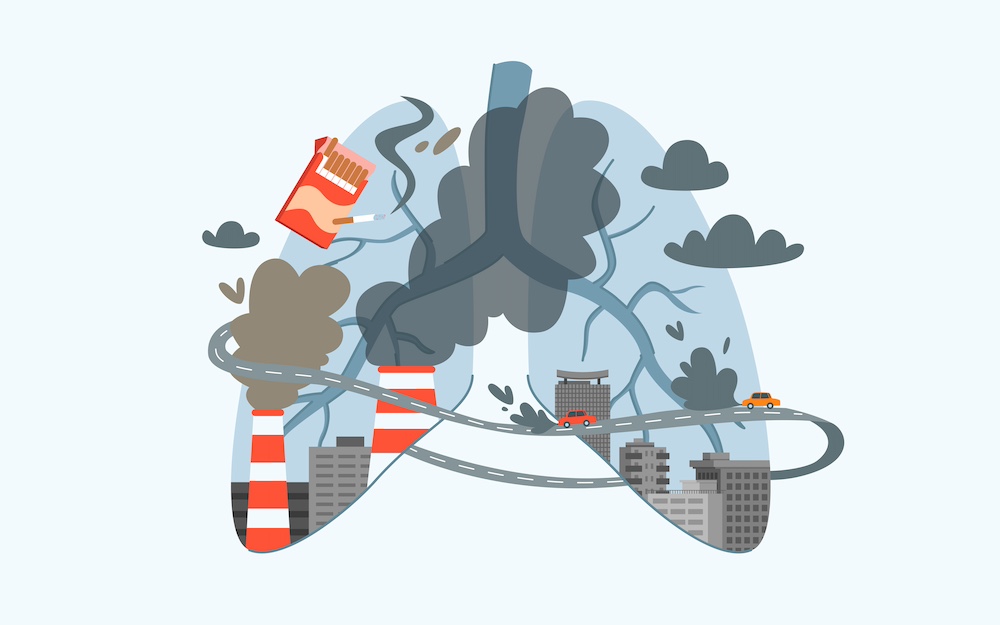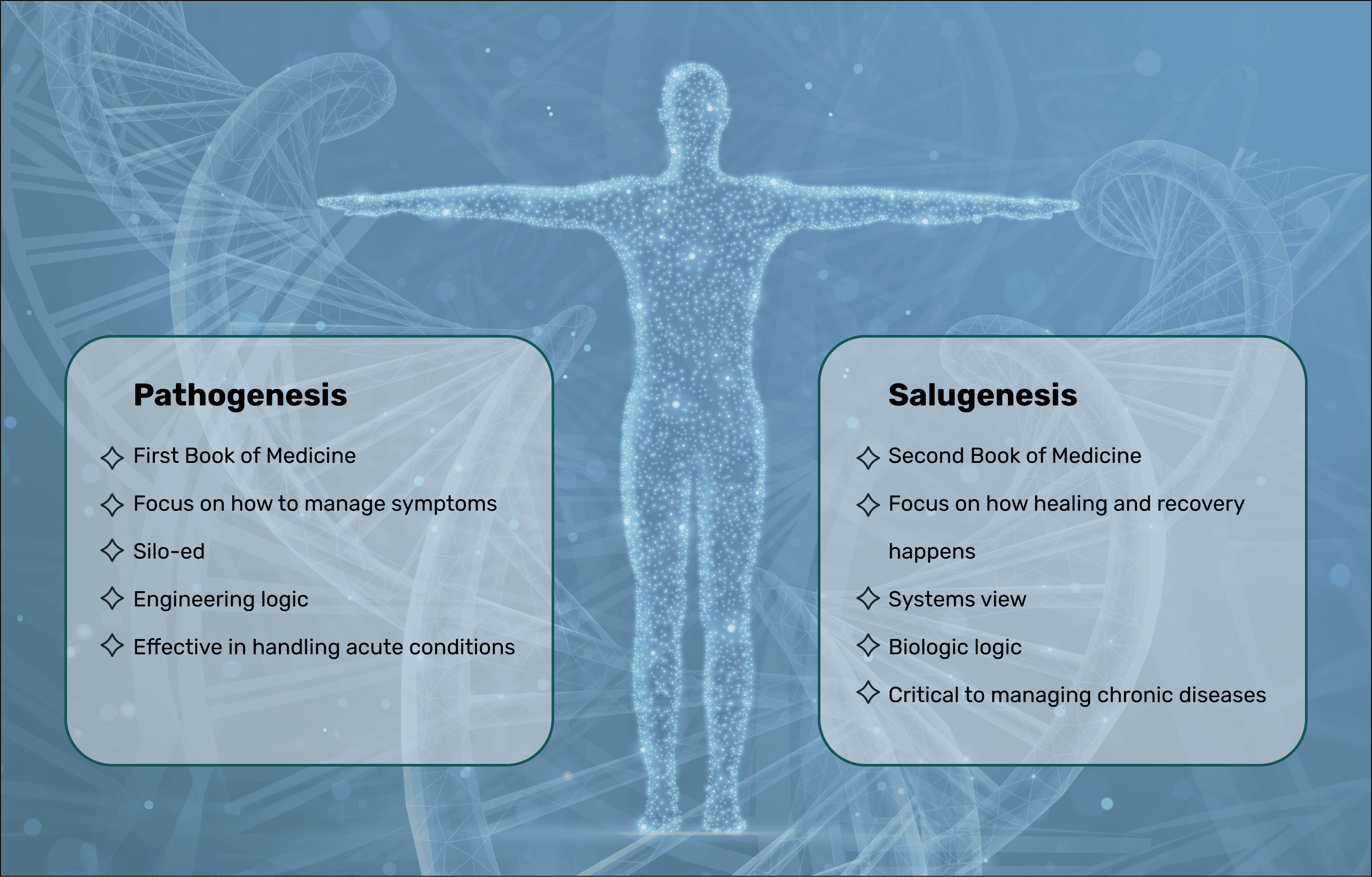Salugenesis and the Story of Mitochondria
Since World War II, modern medicine has made great strides by dealing so effectively with the triggers and risks associated with acute infections that people, at least in the developed world, are less likely to die from physical injuries, viral or bacterial infections, poisoning, or vitamin deficiencies. This pathogenesis approach, despite its success, is a siloed, engineering-style approach with a focus on dealing with symptoms, and not necessarily the root causes of diseases.
In the last fifty to hundred years, the use of chemicals (7,000 plus used alone in agriculture, industry, and personal care) and plastics (more than 80 billion pounds of plastics generated each year) has been accelerating and these chemicals have been polluting our air, water, soil, and food. The combination of toxic chemicals and lifestyle changes in our diet, exercise, sleep cycles, and stress levels are damaging our mitochondria.1
The World Health Organization estimates that over 70% of deaths around the world occur as a result of noncommunicable diseases, such as heart disease, kidney disease, diabetes, dementia and cancer, caused by chronic inflammation.2 (Check out a previous article on this blog for a detailed read on chronic inflammation.)
The U.S. Centers of Disease Control and Prevention define chronic disease as any condition that is not cured within 12 months. Typically, interventions for chronic conditions, for example insulin for diabetes or statins for heart disease, often have to be taken for life because they are a response to the disease profile and not necessarily as a response to the root cause.

From pathogenesis to salugenesis
Dr. Naviaux defines salugenesis as a systems approach which is a “evolutionarily conserved, and highly choreographed sequence of molecular steps that comprise the healing cycle.” This approach includes interventions that promote completion of the healing cycle and are not limited to drugs, but can also be exercise, stress relief, adaptogens, and more.

Cell Danger Response, the body’s innate ability to heal
- Chemical insults, such as heavy metals mercury, nickel, lead; the chemical Bisphenol A (BPA) commonly used in water bottles, food cans; agricultural pesticides (more than a billion pounds of pesticides are used annually in the US alone to combat weeds and pests)
- Biological insults, such as viruses, bacteria, parasites
- Physical insults, such as excessive heat or cold, excess salt or sugar, radiation
- Psychological insults, such as verbal abuse, bullying, harassment, humiliation, social media, war

The CDR — a key part of the body’s natural immune system response — has three stages and once triggered, requires the cells to successfully go through each CDR stage before healing can happen. Once this process is completed, the cells are returned to the state of homeostasis where they are once again ready to handle the next insult.
The mitochondria play the starring role in sensing and responding to physical, chemical, and microbial insults inside and outside the cells.
Mitochondria, fundamental regulators of Cell Danger Response
- Shifting of cellular metabolism from polymer synthesis to monomer synthesis so that the pathogens cannot hijack the cell resources
- Stiffening of the cell membranes to stop further infection
- Release of antiviral and antimicrobial chemicals by the cell
- Increasing mitochondrial biogenesis, mitophagy, and autophagy to remove the pathogens
- Alteration of the gene expression by DNA methylation
- Mobilization of retroviruses
- Warning neighboring cells of the danger
What happens when the Cell Danger Response cannot resolve
How to increase and support healthy mitochondria
Read Next
References
- Naviaux, Robert K. (2020, March). Perspective: Cell danger response Biology—The new science that connects environmental health with mitochondria and the rising tide of chronic illness. Mitochondrion, Vol51. https://www.sciencedirect.com/science/article/pii/S1567724919302922?via%3Dihub
- World Health Organization. Noncommunicable Diseases. https://www.who.int/health-topics/noncommunicable-diseases#tab=tab_1
- Naviaux, Robert K. (2022, Dec. 7). Mitochondrial and metabolic features of salugenesis and the healing cycle. The Mitochondrial and Metabolic Disease Center, University of California, San Diego School of Medicine. https://www.sciencedirect.com/science/article/pii/S1567724923000351
- Naviaux, Robert K. (2020, May). The Cell Danger Response: a new paradigm for understanding chronic disease? IHCAN Mitochondrial Medicine. https://aonm.org/wp-content/uploads/2021/07/Cell-Danger-Response-IHCAN.pdf
- Naviaux, Robert K. (2014, May) Metabolic features of the cell danger response. Mitochondrion, e18(2014). https://www.sciencedirect.com/science/article/pii/S1567724913002390?via%3Dihub



